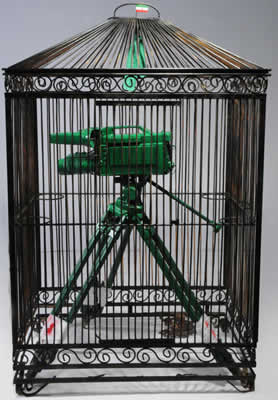 Iranian photographer, filmmaker, Abbas Hojatpanah will hold an exhibition of his photos and screening of his documentaries in Sweden with the help of Exile Film Festival.
Iranian photographer, filmmaker, Abbas Hojatpanah will hold an exhibition of his photos and screening of his documentaries in Sweden with the help of Exile Film Festival.
Abbas, started his filmmaking in Iran and in NIRT and then continued his work as a photographer and filmmaker during the last 25 years in Los Angeles.
Cinema Without Borders: Please tell us about your background as a filmmaker
Abbas Hojatpanah: Not everybody started their involvement in art with filmmaking; have you ever thought about how many film directors have a background of being a painter or sculptor? I graduated from the University of Tehran with a degree in Sculpting and I then I started to work as a painter and photographer. Actually, I have been doing photography since I was twelve! My older brother had a black and white lab in our house, and I did lab work before taking my very first picture! It was my brother who bought me my first camera.
During my college years, nobody could ever find me without a camera.My introduction into the world of filmmaking came when an American documentary filmmaker visited Iran in order to make a documentary about Bronze in Lorestan and he was in need of an assistant. One of my professors, Parviz Tanavoli, recommended me for the position, and that was my first foray.
Later at National Iranian Radio and Television, I started making documentary films about art and specific artists. And it was there that I attended a one year course in TV production. I worked at N.I.R.T. until 1985  and during my years at there. I made over 40 documentary films. My films brought recognition and numerous awards from different television and film festivals
and during my years at there. I made over 40 documentary films. My films brought recognition and numerous awards from different television and film festivals
CWB: The majority of your films are documentaries, why you have focused in this field?
AH: When I started making my films, I believed that I was helping to educate people, especially in my country. I still prefer to make, and also watch, documentary films.
CWB: Please give our readers some information about the event arranged around your work at the “Exile Film Festival.”
AH: The International Exile Film Festival in Gothenburg Sweden was established in 1992 and focuses on freedom of speech  and the rights of filmmakers to express themselves in an atmosphere free from any political, social, religious ethnical and ideological limitations. They invited me to have an exhibition of my portrait photography of the Iranian Artists in Exile and to hold screenings of five of my documentary films. On March 26, 2011 the photography exhibition will be at Victoria Hall in Gothenburg. And on March 27th, the film screening and Q&A will be held at the Haga Bion theater.
and the rights of filmmakers to express themselves in an atmosphere free from any political, social, religious ethnical and ideological limitations. They invited me to have an exhibition of my portrait photography of the Iranian Artists in Exile and to hold screenings of five of my documentary films. On March 26, 2011 the photography exhibition will be at Victoria Hall in Gothenburg. And on March 27th, the film screening and Q&A will be held at the Haga Bion theater.
CWB: Do you see any relation between your work as a photographer and filmmaker?
AH: My Photography experience has helped me a lot technically and artistically.
But it was not only photography that aided me, but my background in painting, sculpting and graphic design. All of these helped me to create better compositions, color and framing.
For more information about International Exile Film Festival please visit the festival site.
